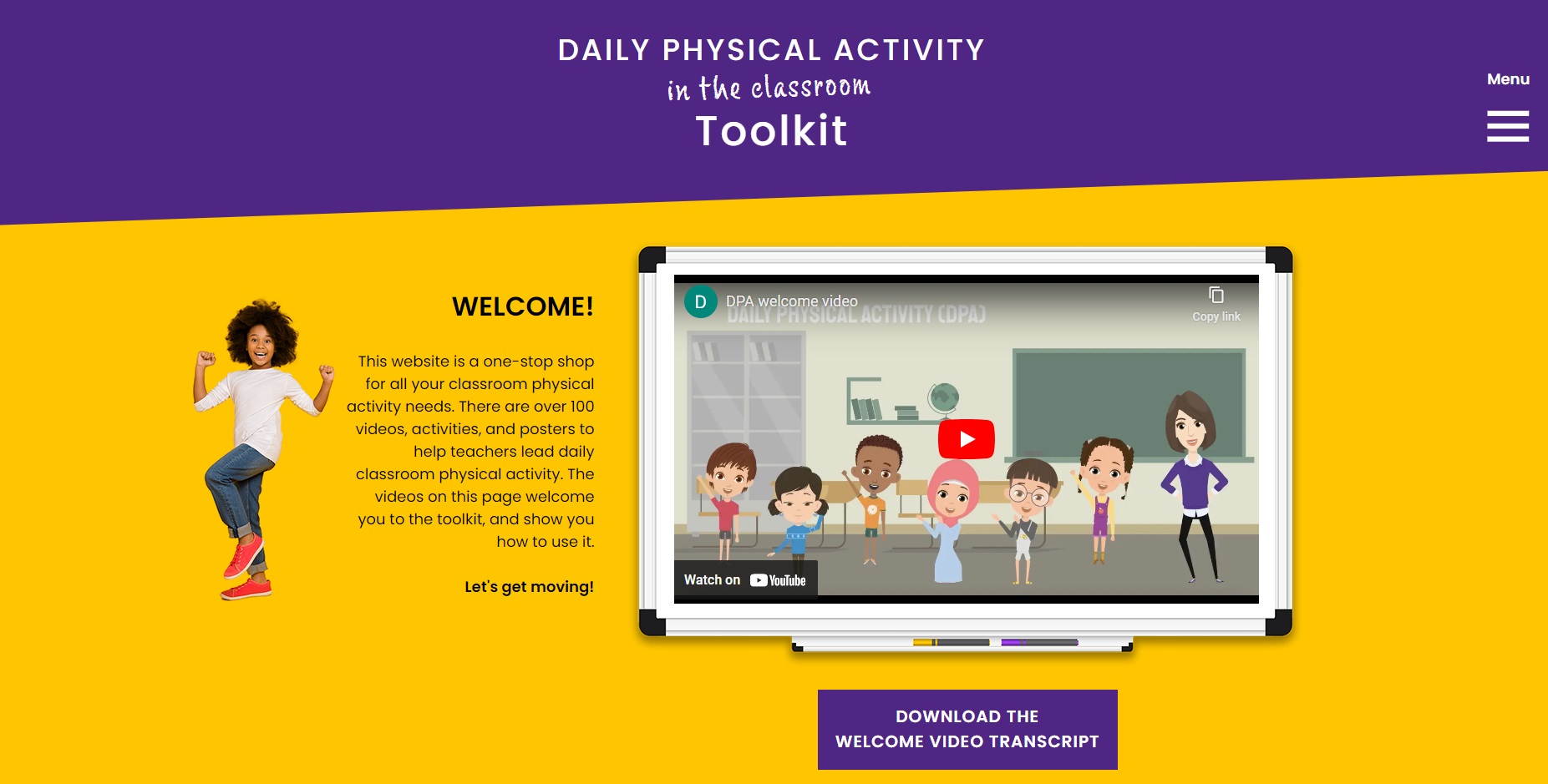
Teachers using the toolkit nearly doubled the average amount of physical activity they implemented in classrooms each week.

Teachers using the toolkit nearly doubled the average amount of physical activity they implemented in classrooms each week.
A free toolkit developed by researchers at Western University has sparked hope for addressing an urgent need to boost the amount of physical activity children receive in Ontario’s classrooms.
Under the Ontario government’s current daily physical activity (DPA) policy, elementary students are required to receive at least 20 minutes of DPA each school day during instructional time. Despite the policy’s creation, and the multitude of benefits that physical activity provides, researchers at Western’s Faculty of Education recently found that only 23 per cent of teachers in the province were hitting the DPA target.
 Education assistant professor and Canada Research Chair Barbara Fenesi.
Education assistant professor and Canada Research Chair Barbara Fenesi.
Some of the top barriers preventing sufficient DPA were inaccessible resources, insufficient teacher training and a lack of time and space in schools, according to Barbara Fenesi, Education assistant professor and Western’s Canada Research Chair in the Science of Learning.
The findings stem in part from a large collection of research on physical activity in students carried out by the Working to Enhance Brain and Body Research (WEBB) Lab, where Fenesi serves as lab supervisor.
“We wanted to put a pause on the research that is looking at identifying barriers,” Fenesi said.
“We’ve identified barriers, so now how do we address the barriers that exist?”
This question is what drove the creation of the DPA Toolkit, a website that brings together “all the wonderful resources that already exist.”
“It’s kind of like a one-stop shop,” Fenesi added.
An evaluation of the toolkit was recently published in Education Sciences in a study authored by Fenesi, Education PhD candidate Hannah Bigelow and Education MA student Shelby Singh.
The DPA Toolkit is a centralized hub that provides educators with free access to more than 200 physical activity videos, games and activity posters, as well as helpful research and other information.
These resources are split into grade ranges — Kindergarten to Grade 3, Grade 4 to Grade 6 and Grade 7 to Grade 8 — and are further broken down into curriculum-linked categories such as history and language, math and science, and general movement.
To create the simple and intuitive design, Fenesi and her team enlisted the help of graduate students from The WEBB Lab and summer student interns from the Centre for School Mental Health, who were then tasked with finding and categorizing as many resources as they could.
The final step was translating the massive amount of raw data onto a user-friendly website, which was achieved with the help of website and content creator Paulina Rzeczkowska.

To evaluate the toolkit, Fenesi, Bigelow and Singh surveyed more than 300 elementary teachers who used the toolkit between January and March of this year.
A pre-survey found that participants were implementing an average of 48.8 minutes of DPA per week, less than half of what the Ontario government requires. After spending three months with the toolkit, that average nearly doubled to just over 91 minutes of DPA.
The benefits stretched beyond the amount of DPA achieved, as teachers reported a significant improvement in their confidence and enjoyment in implementing DPA.
Access to the toolkit also gave teachers a better understanding of the role DPA plays in supporting student mental health, academic performance and cognitive function. Teachers also reported male students were less restless in class, while female students were reported as having increased enjoyment and engagement with DPA.
The results were even more positive than what researchers had expected and Fenesi emphasized the value in having teachers reap these benefits from a resource like the DPA Toolkit.
“Something that is accessible, curated for them and easy to implement has created these spikes in their own subjective experiences of implementation, and it required no training,” Fenesi added.
While the toolkit certainly proved its worth, Fenesi says this is only “the first wave of this research.”
Despite the success, other barriers still lingered that hindered DPA, such as school culture and climate.
The teachers who participated in the study also pointed to several needs that sprang up during their time with the toolkit.
This includes needing additional resources for students in Grade 7 and Grade 8, additional resources for children with exceptionalities, such as ADHD or autism spectrum disorder, and more Indigenous-based resources.
“We received a lot of really awesome feedback and we’re working to incorporate those changes into the next iteration of the toolkit and re-evaluate it,” Fenesi said.
Fenesi hopes the work will lead to a collaboration with Ontario’s Ministry of Education, so that the toolkit can be more widely available.
“The Ministry would be really helpful in identifying how better to integrate some of the resources in the toolkit with actual curriculum-based instruction to save teachers some time” she added.
The Canada Research Chair also envisions having the resource embedded in preservice teacher education programs, such as Western’s Teacher Education program.
In the meantime, educators wanting to use the toolkit for their own classrooms can do so at dpatoolkit.ca. An instructional video is also available below.